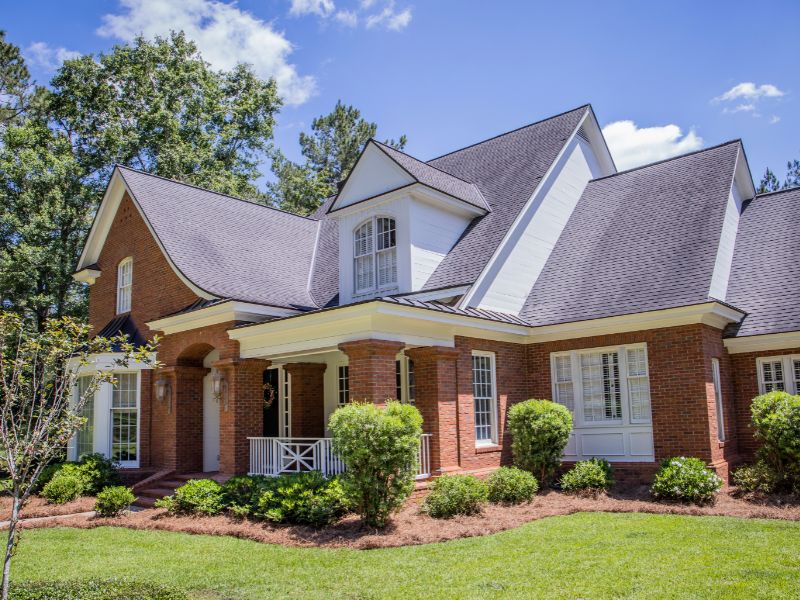When people think about brick and stone masonry, they often picture durability, beauty, and timeless charm. But what many homeowners don’t realize is that brick and stone masonry can also make your home more energy-efficient—saving money and helping the planet. From natural insulation to reduced energy bills, these materials offer real benefits that go far beyond aesthetics.

Let’s break down why brick and stone masonry is a smart choice for anyone looking to build an energy-efficient home.
Brick and Stone Masonry
What Is Brick and Stone Masonry?
Brick and stone masonry involves building structures using individual bricks, stones, or blocks held together with mortar. This age-old technique is prized for its strength, appearance, and long-lasting performance.
Why Energy Efficiency Matters
With rising energy costs and growing environmental concerns, homeowners are looking for smart ways to lower utility bills and reduce their carbon footprint. Masonry offers a hidden advantage in this area—and we’re about to show you how.
1. Natural Insulation Properties
How Masonry Regulates Indoor Temperatures
Brick and stone naturally resist temperature swings. In the summer, these materials stay cool longer; in the winter, they retain warmth. This balance means your HVAC system doesn’t have to work as hard to keep your indoor climate comfortable.
Comparing Brick and Stone with Other Materials
Unlike wood or vinyl siding, brick and stone don’t easily absorb or transmit heat. This helps keep indoor spaces stable in temperature, cutting down on energy use.
2. Thermal Mass Advantage
What Is Thermal Mass?
Thermal mass refers to a material’s ability to absorb and store heat. Brick and stone are excellent at this. During the day, they soak up the sun’s heat, and at night, they slowly release it to maintain a consistent indoor temperature.
How It Saves on Energy Bills
Homes built with brick and stone often see lower heating and cooling costs because thermal mass reduces the need for mechanical heating and cooling.
3. Reduced Heating and Cooling Costs
Long-Term Cost Savings
By keeping your home warmer in winter and cooler in summer, masonry helps you cut back on air conditioning and heating. Over the years, this can lead to significant savings.
Climate Adaptability of Masonry Homes
Whether you live in a hot, cold, or mixed climate, brick and stone masonry adapts well to changing seasons, providing a consistent layer of protection year-round.
4. Airtight and Durable Construction
Minimizing Drafts and Air Leaks
Masonry creates tight seals between materials, reducing unwanted airflow that can drive up heating and cooling bills.
Resistance to Wind and Weather
These materials hold up under harsh weather, from strong winds to heavy rain. That kind of durability also contributes to energy efficiency because there’s less wear and tear on the structure.
5. Lower Carbon Footprint
Sustainable Building Materials
Many bricks and stones are sourced locally and don’t require energy-intensive manufacturing. This helps reduce emissions during construction.
Energy Use Over Time
Because of their longevity and insulation, masonry homes typically use less energy over their lifetime compared to homes built with lighter, less durable materials.
6. Long Lifespan = Fewer Rebuilds
Durable by Nature
Brick and stone buildings often last for generations. That means fewer materials are needed for repairs or rebuilds.
Reduced Material Waste Over Time
A longer-lasting home means fewer replacements of walls, siding, or roofing—saving money and reducing landfill waste.
7. Compatibility with Eco-Friendly Designs
Integrating Solar Panels and Masonry
Brick and stone structures pair well with solar panel systems. The stable surfaces provide a reliable foundation, and the energy savings stack up.
Designing Energy-Efficient Homes
Masonry allows architects and homeowners to include features like passive solar design, thick insulating walls, and minimal thermal bridging—all critical for energy efficiency.
Real-Life Case Study: Energy-Efficient Brick Home
In Austin, Texas, a family built their dream home using a mix of reclaimed brick and local limestone. After installing solar panels and using passive design principles, their energy bill dropped by 50%. Over five years, the home paid back its construction upgrade costs in savings—plus it stays cool in summer and cozy in winter without overusing HVAC.
Tips for Homeowners Choosing Masonry
- Ask about insulation strategies that pair with masonry.
- Choose experienced masonry contractors who understand energy-saving designs.
- Consider thermal mass during planning, not just during construction.
- Use local and recycled materials when available.
- Pair masonry with energy-efficient windows and doors for maximum benefit.
Frequently Asked Questions
1. Is brick and stone masonry more expensive than wood or vinyl?
Yes, but the upfront cost is offset by long-term savings in maintenance and energy bills.
2. How does masonry reduce energy bills?
By providing natural insulation and thermal mass, masonry reduces the need for artificial heating and cooling.
3. Is masonry eco-friendly?
When built with local or recycled materials, masonry has a much lower carbon footprint than many modern alternatives.
4. Can brick and stone be combined with modern energy-efficient technologies?
Absolutely. They work well with solar panels, energy-efficient windows, and insulation upgrades.
5. Does masonry help with noise insulation too?
Yes! Thick brick or stone walls block outside noise, creating a quieter indoor environment.
6. How long does brick and stone masonry last?
Properly built masonry structures can last over 100 years with minimal upkeep.